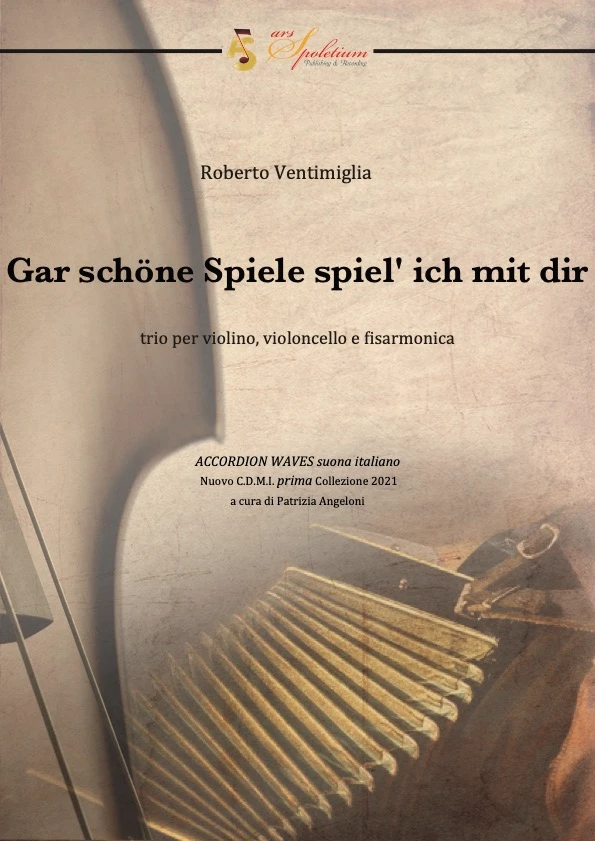Gar schöne Spiele spiel’ ich mit dir
Il Trio trae il proprio Dna dal lied schubertiano Erlkönig, prendendone in prestito la figura ritmica essenziale della terzina, il gesto ritmico-melodico del basso pianistico…
(LA PARTITURA IN OGGETTO È DISPONIBILE SOLO NELLA VERSIONE PDF)
The Trio draws its DNA from the Schubertian lied Erlkönig, borrowing the essential rhythmic figure drawn by triplets, the piano bass rhythmic-melodic gesture…
(ONLY PDF VERSION)
Gar schöne Spiele spiel’ ich mit dir (2020), trio per violino, violoncello e fisarmonica, pp. 53 (partitura e parti staccate)
Il trio Gar schöne Spiele spiel’ ich mit dir trae il proprio Dna dal lied schubertiano Erlkönig, prendendone in prestito la figura ritmica essenziale della terzina, il gesto ritmico-melodico del basso pianistico (portatore di un determinante ‘sapore’ armonico e umorale) ed un estratto melodico che comprende nell’originale vocale il verso qui elevato a titolo.
I ‘bei giochi’ promessi da quest’ultimo sono quelli che mi ha dato piacere fare con gli elementi appena menzionati, tanto localmente, quanto globalmente, permettendomi di avere appunto un Dna da cui far germogliare l’intera composizione: un organismo musicale il cui forte legame biologico col ‘genitore’ non ne inibisce l’affermarsi come ‘individuo’ a sé.
Gar schöne Spiele spiel’ ich mit dir (2020), trio for violino, cello and accordion, pp. 53 (score and parts)
The DNA of the trio Gar schöne Spiele spiel’ ich mit dir lies in the lied Erlkönig by Franz Schubert, whose musical material is partially borrowed and used to write the new score: it is the case of the basic triplet rhythmic item, of the rhythmic and melodic gestures of the original piano bassline and a vocal melodic excerpt (the one supporting the original text line which is now serving as the title).
The ‘beautiful games’ promised by the title are those I enjoyed playing with the above-mentioned items, both locally and globally, and which allowed me to have a core DNA to shape my whole new composition with. Ultimately, I tried to create a musical organism whose deep biological bond with its ‘parent’ wouldn’t prevent it from affirming its own identity.




